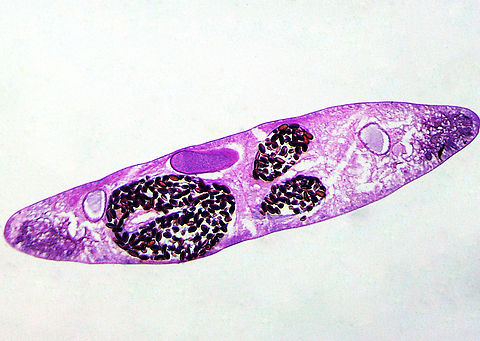Chinese Liver Fluke
Clonorchis sinensis
''Clonorchis sinensis'', the Chinese liver fluke, is a liver fluke belonging to the class Trematoda, phylum Platyhelminthes. It infects fish-eating mammals, including humans. In humans, it infects the common bile duct and gall bladder, feeding on bile. It was discovered by British physician James McConnell at the Medical College Hospital in Calcutta in 1874. The first description was given by Thomas Spencer Cobbold, who named it ''Distoma sinense''. The fluke passes its lifecycle in three different hosts, namely freshwater snail as first intermediate hosts, freshwater fish as second intermediate host, and mammals as definitive hosts.
Endemic to Asia and Russia, ''C. sinensis'' is the most prevalent human fluke in Asia and third-most in the world. It is still actively transmitted in Korea, China, Vietnam, and Russia. Most infections occur in China. The infection, called clonorchiasis, generally appears as jaundice, indigestion, biliary inflammation, bile duct obstruction, and even liver cirrhosis, cholangiocarcinoma, and hepatic carcinoma.
As a major causative agent of bile duct cancer, the International Agency for Research on Cancer has classified ''C. sinensis'' as a group 1 biological carcinogen in 2009.
Endemic to Asia and Russia, ''C. sinensis'' is the most prevalent human fluke in Asia and third-most in the world. It is still actively transmitted in Korea, China, Vietnam, and Russia. Most infections occur in China. The infection, called clonorchiasis, generally appears as jaundice, indigestion, biliary inflammation, bile duct obstruction, and even liver cirrhosis, cholangiocarcinoma, and hepatic carcinoma.
As a major causative agent of bile duct cancer, the International Agency for Research on Cancer has classified ''C. sinensis'' as a group 1 biological carcinogen in 2009.
